The North remembers: In Northern Ireland, ‘Game of Thrones’ leaves a lasting legacy
The Europa Hotel was once known as the most bombed hotel in Europe, but on a Friday morning in April, it’s bustling with tourists and weekenders enjoying a hearty breakfast buffet. Almost no one recognizes Conleth Hill, the actor who plays Varys, the bald eunuch and royal advisor whose cunning enabled him to survive nearly eight seasons on one of TV’s bloodiest shows, “Game of Thrones,” without ever lifting a sword.
The anonymity (aided by the reappearance of his thick, silver hair) doesn’t appear to faze him. Here he’s just another local who lives an hour away in Ballycastle, the seaside town where he grew up, another customer who is indulging in a gut-busting breakfast of bacon, eggs, sausage, potato bread and white pudding. (In a minor act of heresy, he has opted to skip the traditional black pudding, a concoction whose ingredients include pork blood and oats.)
“Don’t be judging!” says the actor, who enjoys the comforts of home — or most of them.
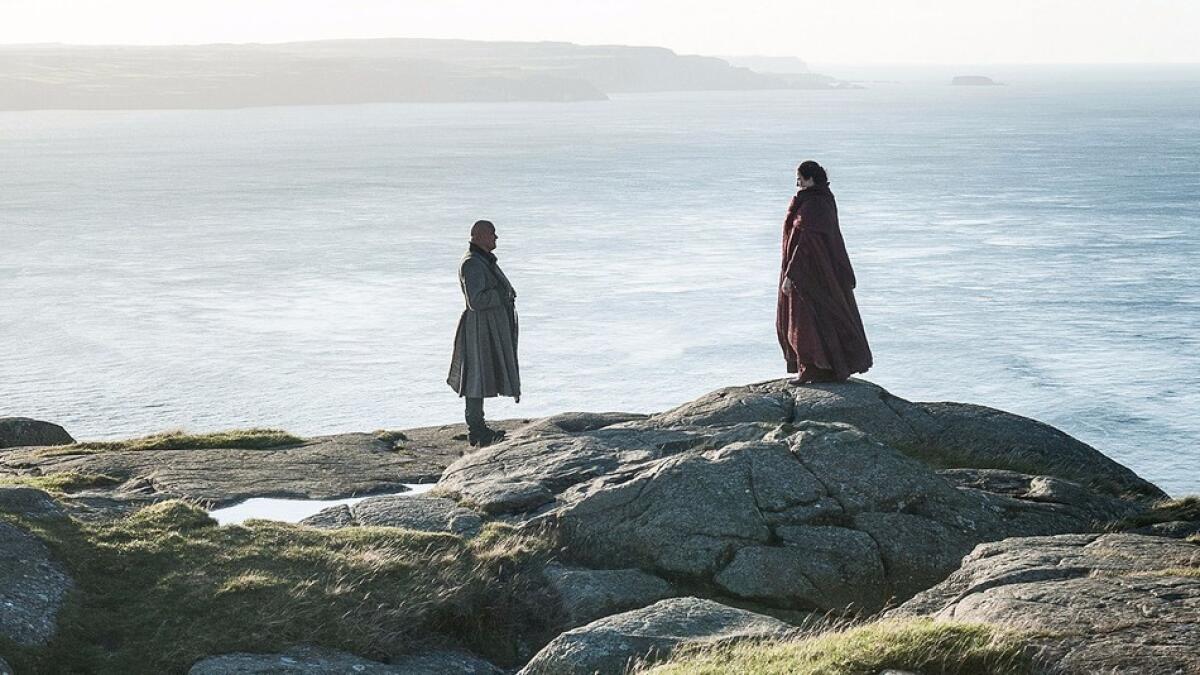
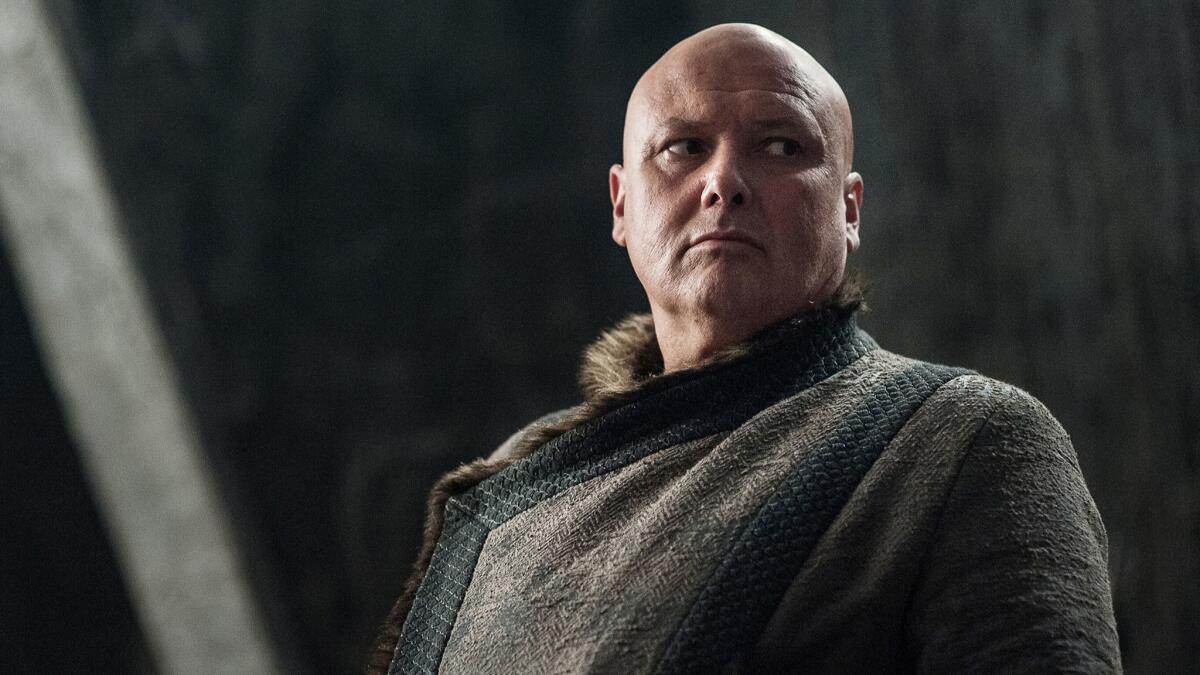
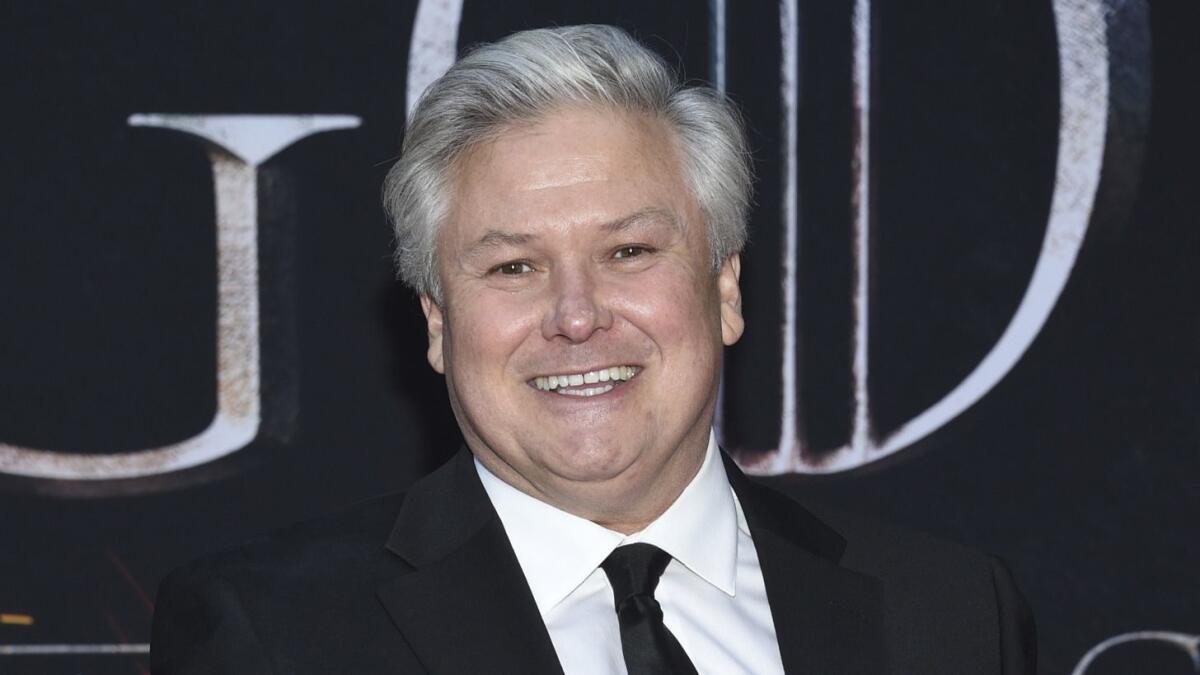
He’s had ample opportunity to do so on “Game of Thrones,” which will reach its highly anticipated conclusion on HBO — or “haich-BO,” as the locals say it — on Sunday. Roughly 75% of the series was filmed on soundstages and in otherworldly locations around Northern Ireland.
The most ambitious and most honored show of the decade has pumped more than $250 million into the local economy since 2009, provided jobs and training for hundreds of crew members and spawned a thriving tourism trade. It helped transform Belfast into one of Europe’s most vital entertainment industry hubs and remade Northern Ireland’s image across the world.
It’s a dramatic lift for a country that was once synonymous with intractable sectarian violence. Tensions between Irish nationalists, who are predominantly Catholic and favor a united Ireland, and British loyalists, who are mostly Protestant and want to remain part of the United Kingdom, have existed for hundreds of years but came to a head from the late ’60s until the Good Friday Agreement of 1998 — a period known, almost euphemistically, as the Troubles. During three decades of bloodshed, an estimated 3,600 people were killed.
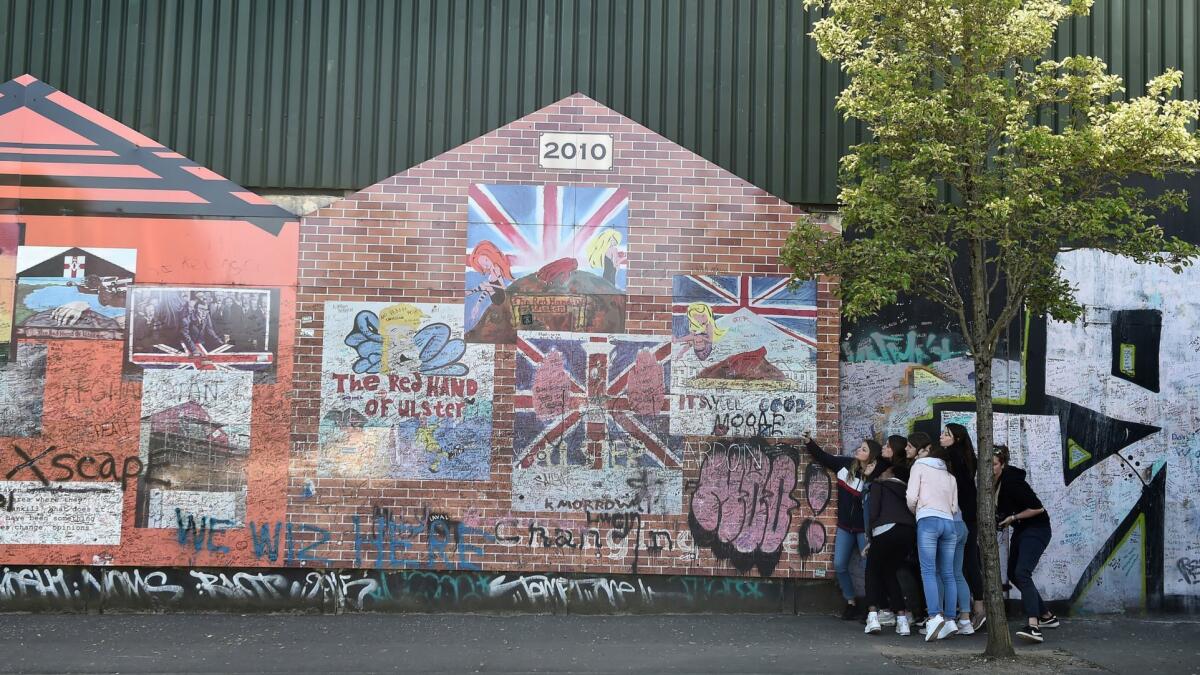
Although the country has been largely free of violence for 21 years, Brexit has raised the possibility of new tensions at the border; there has been no functional elected government since a power-sharing agreement collapsed in early 2017; and a 29-year-old journalist named Lyra McKee was shot and killed last month in Derry— allegedly by teenagers affiliated with the New IRA, a dissident Republican group.
“Game of Thrones” has helped the 1.8 million residents of Northern Ireland contemplate a future beyond grim headlines. The show, says Hill, has been “life-changing,” a sentiment shared by many.
Helen Sloan, who grew up in a small village called Ahoghill and spent eight seasons as the show’s stills photographer, recalls how people used to ask if she was a member of the IRA when she traveled abroad; now they ask her about “Game of Thrones.”
“We’ve come so far as a people and now we have this jewel in the crown to be so proud of,” she says, acknowledging what may be the greatest legacy of the series: hope.
“You can’t really overstate the difference between the screen industry in Northern Ireland before ‘Game of Thrones’ and the screen industry after ‘Game of Thrones,’ ” says Richard Williams, chief executive of Northern Ireland Screen, an agency that promotes the local film and television industry.
Ten years ago, there were no full-time studio facilities in the country. The former site of the Harland and Wolff shipyard was a derelict patch of land on the Belfast waterfront distinguished only by Samson and Goliath, a pair of towering yellow cranes.
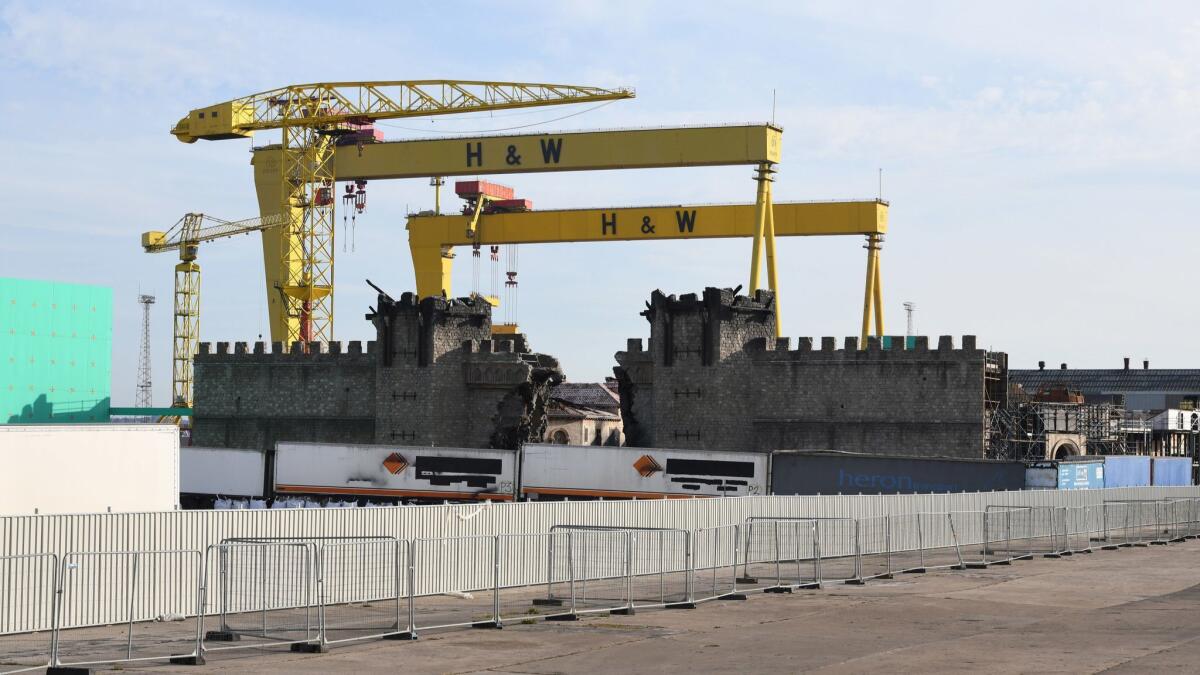
But nearby was a cavernous building known as the Paint Hall, once used to put the finishing touches on huge ocean liners, including the doomed RMS Titanic. It was “scruffy and unpleasant,” Williams recalls, but it was big, with 90-foot ceilings that comfortably fit six “Game of Thrones” soundstages.
In addition to this space, Northern Ireland offered relatively inexpensive labor and housing, and a wide array of natural scenery and centuries-old ruins within a 90-minute drive of central Belfast. (The show also filmed in Iceland, Croatia, Spain and Morocco, among other countries.)
A project of this magnitude in a country with about as many people as Idaho means nearly every taxi driver has a story to share about someone who was involved in a pivotal way.
About 13,000 people were cast as extras, and, for many, the role of background actor offered entry to a lifestyle they could never have imagined before the start of the series.
Extras planned vacations from work so they could come back to the series each season. They were known to be fiercely loyal to their fictional roles; some background actors who were cast as members of the Night’s Watch have been around since the pilot.
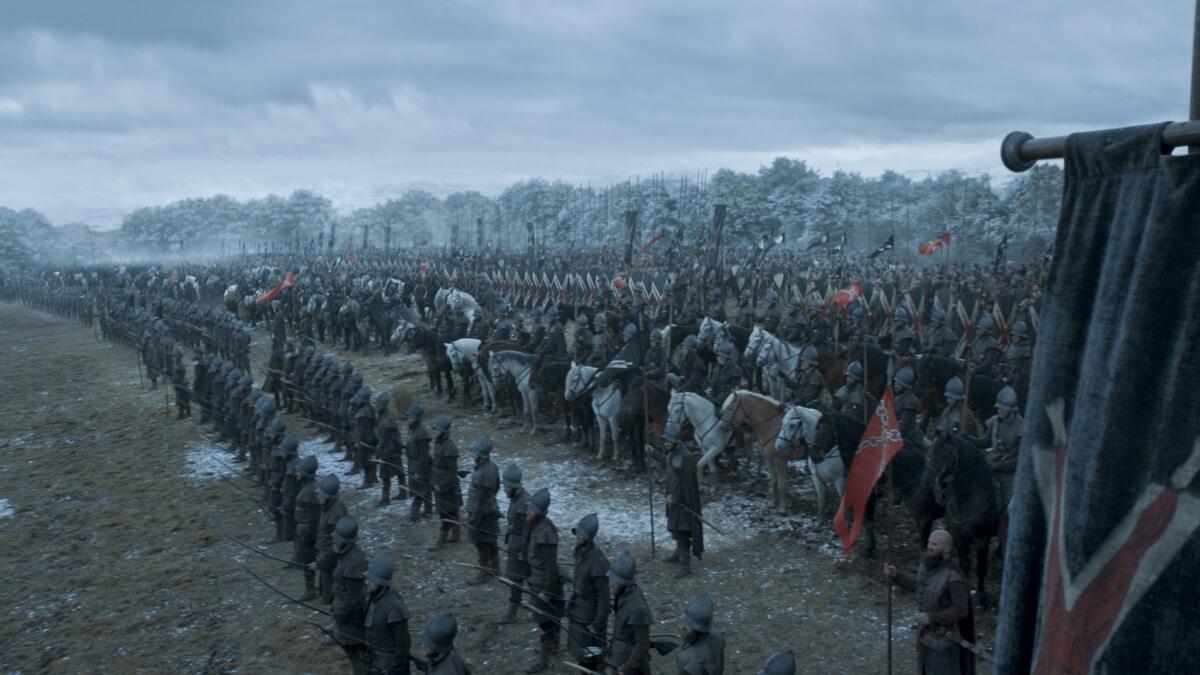
FULL COVERAGE: 'Game of Thrones' the final season »
Other shows have followed the lead of “Game of Thrones” in Northern Ireland, including the Syfy series “Krypton” and the BBC/RTÉ drama “Dublin Murders.” Locals are especially proud of “Derry Girls,” an irreverent sitcom that follows a group of Catholic schoolgirls during the Troubles (available in the U.S. via Netflix). HBO also ordered a pilot for a “Game of Thrones” prequel, set to film this summer in Northern Ireland.
Meanwhile, “Game of Thrones” tourism is booming (350,000 visitors contributed at least $64 million to the local economy in 2018), in sometimes unexpected ways. The Dark Hedges, a lane of undulating beech trees in County Antrim that appeared once, fleetingly, in the Season 2 premiere, has become so popular with the Instagramming hordes that local authorities had to close the road to traffic.
“I would never want to diminish the story of ‘Game of Thrones’ by pretending it can just be replicated.”
— Richard Williams
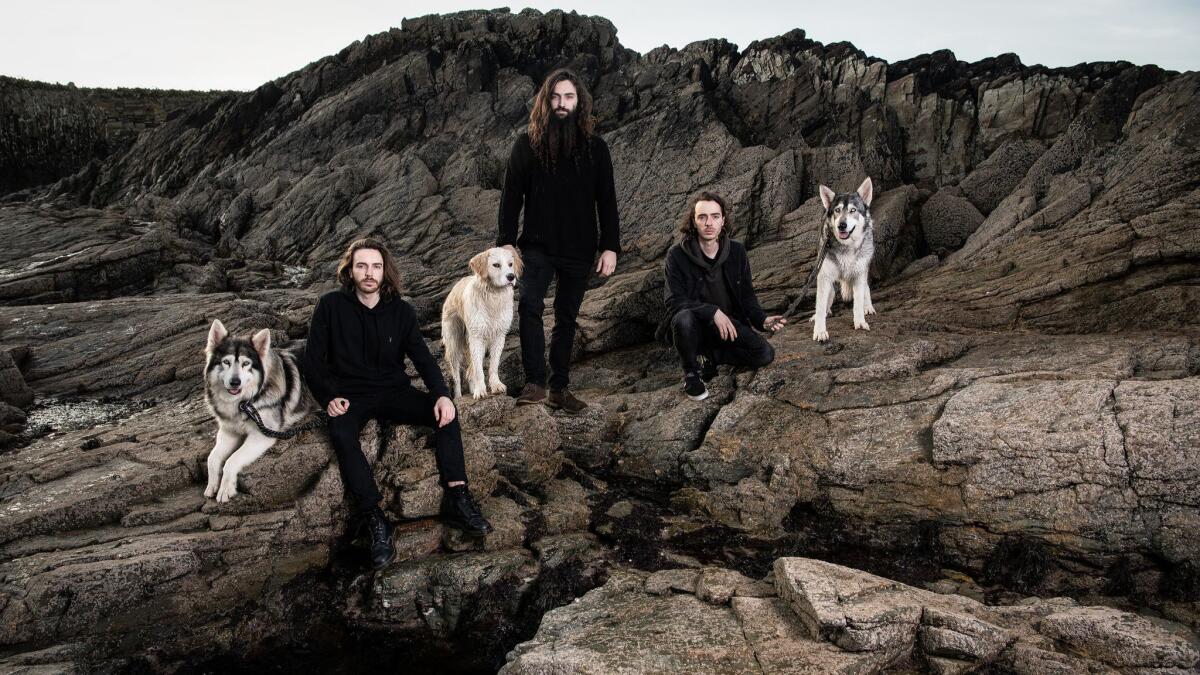
The fantasy canines of the series — known as direwolves — have inspired entrepreneurial efforts. The Mulhall family owns a pair of 110-pound Northern Inuit dogs named Odin and Thor who appeared as direwolf puppies adopted by the Stark children in the series pilot. For about $65, tourists can trek to the lush Tollymore Forest to meet them. “Every time a plane flies overhead, my dad says, ‘Look, more tourists!’ ” says Caelan Mulhall, 23, who appeared as a Stark soldier in the show. Both of his brothers signed on as extras (they played Wildlings) and so did his father (a Dothraki slave master). When they’re not running direwolf tours, the Mulhalls operate a “wee confectionery shop” frequented by fishermen in County Down.
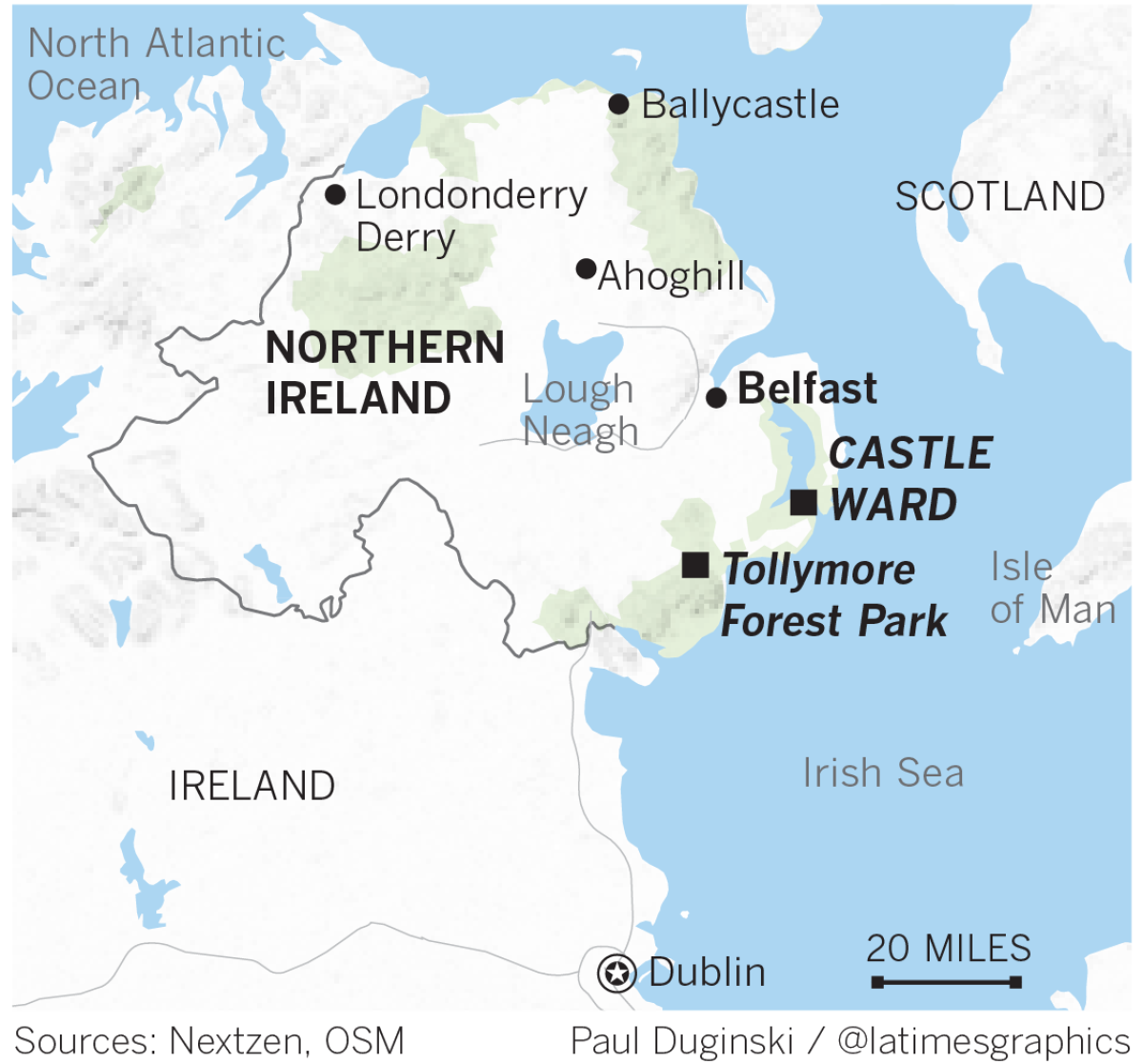
Fans can go “glamping” — glamorous camping — at “Winterfell” (a.k.a. Castle Ward in County Down), wear medieval costumes on a group tour of filming locations or opt for a DIY tour via iPhone app. As of next spring, pilgrims will be able to visit the Game of Thrones Studio Tour, a permanent attraction 40 minutes from Belfast featuring sets, costumes and props from the series —similar to the Harry Potter Studio Tour outside London.
But even though it’s likely that “Game of Thrones” will continue to draw visitors for some time, the loss of the show is still profound. Says Williams, “I would never want to diminish the story of ‘Game of Thrones’ by pretending it can just be replicated.”
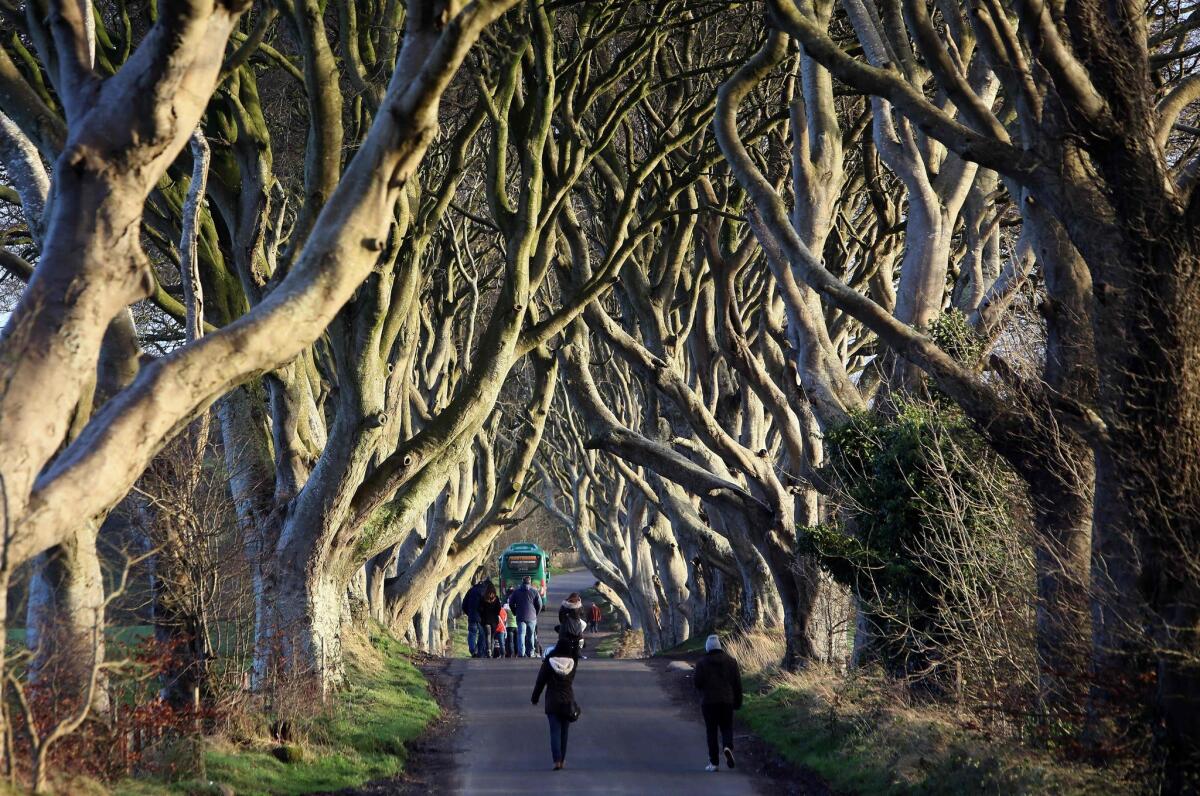
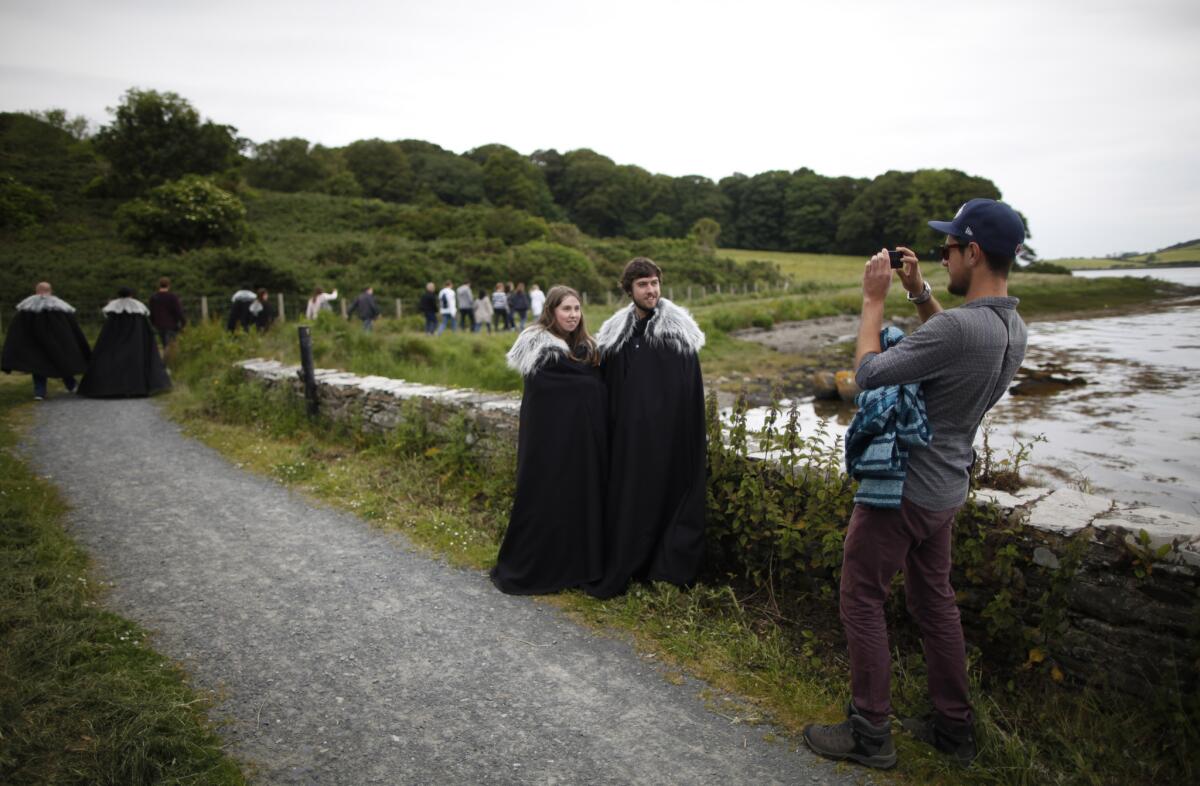
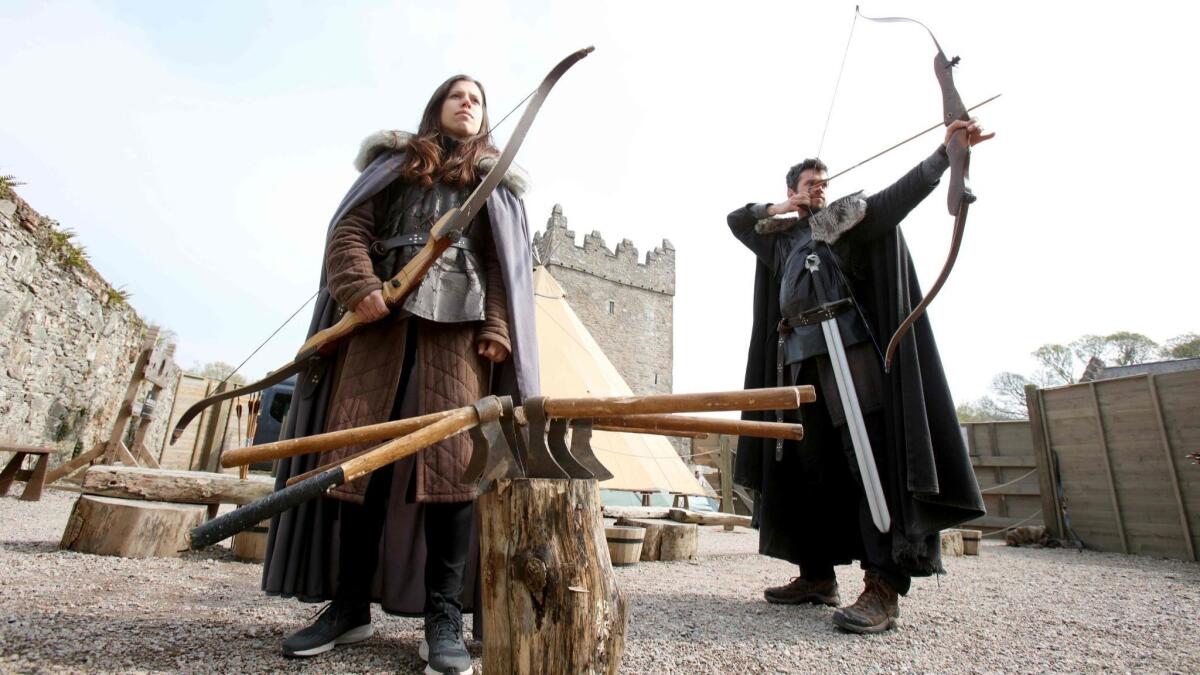
“When I was a teenager and I came [to Belfast], the whole city would be shut down at night,” Hill recalls. The Europa, a high-profile economic target, was bombed more than 30 times by the IRA. Today it is touted in the English press for its “understated grandeur.”
A visitor has to walk only a few minutes from the hotel to reach the Cathedral Quarter, the city’s vibrant nightlife district, where you can sip elderflower cocktails along with the more traditional pints of Guinness. The city now has plenty of craic — a.k.a. fun — to offer.
Hill’s career reflects the “Game of Thrones” effect in Northern Ireland writ large. The show has brought the actor an unexpected level of visibility and financial security, right in his own backyard — or very close. In a full-circle moment in Season 7, he filmed scenes at Fairhead, a clifftop overlooking the sea where he and his siblings used to play as children in the ’70s. His brother, Ronan, a sound mixer who has won four Emmys on the series, was there with him.
The 55-year-old actor grew up in the 1970s at the height of the Troubles. In Ballycastle, Hill was largely insulated from the violence, but his father, Patsy, was on the frontlines as a cameraman for the BBC, documenting attacks such as Bloody Friday, a bombing spree that killed nine people in Belfast in 1972. He would often call home with a message for his wife: “Don’t let the kids watch the news tonight.”
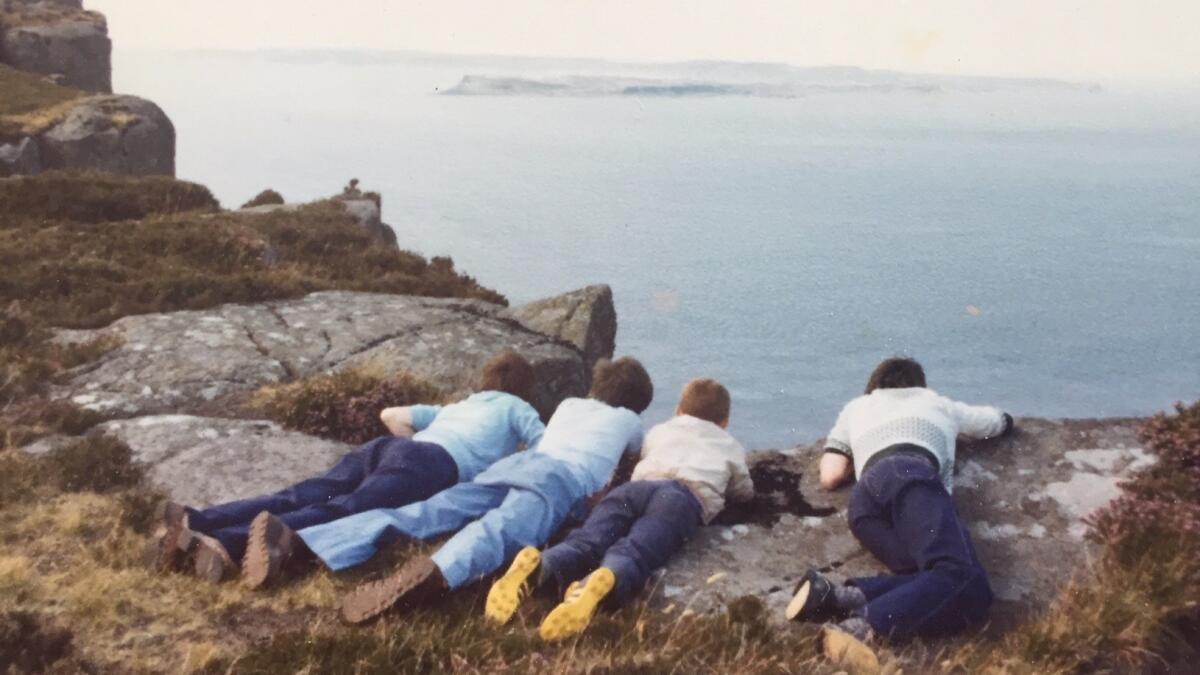
After graduating from the Guildhall School of Music & Drama in London, Hill worked steadily, with a breakthrough role in “Stones in His Pockets,” a dark comedy about a Hollywood movie that takes over a small town in Ireland. The play started in Belfast before transferring to London’s West End and, eventually, Broadway, where Hill earned a Tony nomination in 2001.
Hill believes art and culture have been crucial in promoting cross-cultural understanding in Northern Ireland. “Here in the worst of times, the theater kept going and kept telling other people's stories all the time.”
Hill was raised in a largely apolitical household; his father had to remain objective because of his job. But with his distinctively Irish Catholic first name, Hill says he always felt “subversive.” “So many judgments are made here just because of your name or just because of where you're from. It's different now; a lot has changed,” he says, “but it's going to take a long time.”
The peace in Northern Ireland has lasted for two decades, but deep divisions are visible just beyond Belfast’s cosmopolitan city center. Barriers known as “peace walls” scar the city, separating Catholic from Protestant, unionist from nationalist.
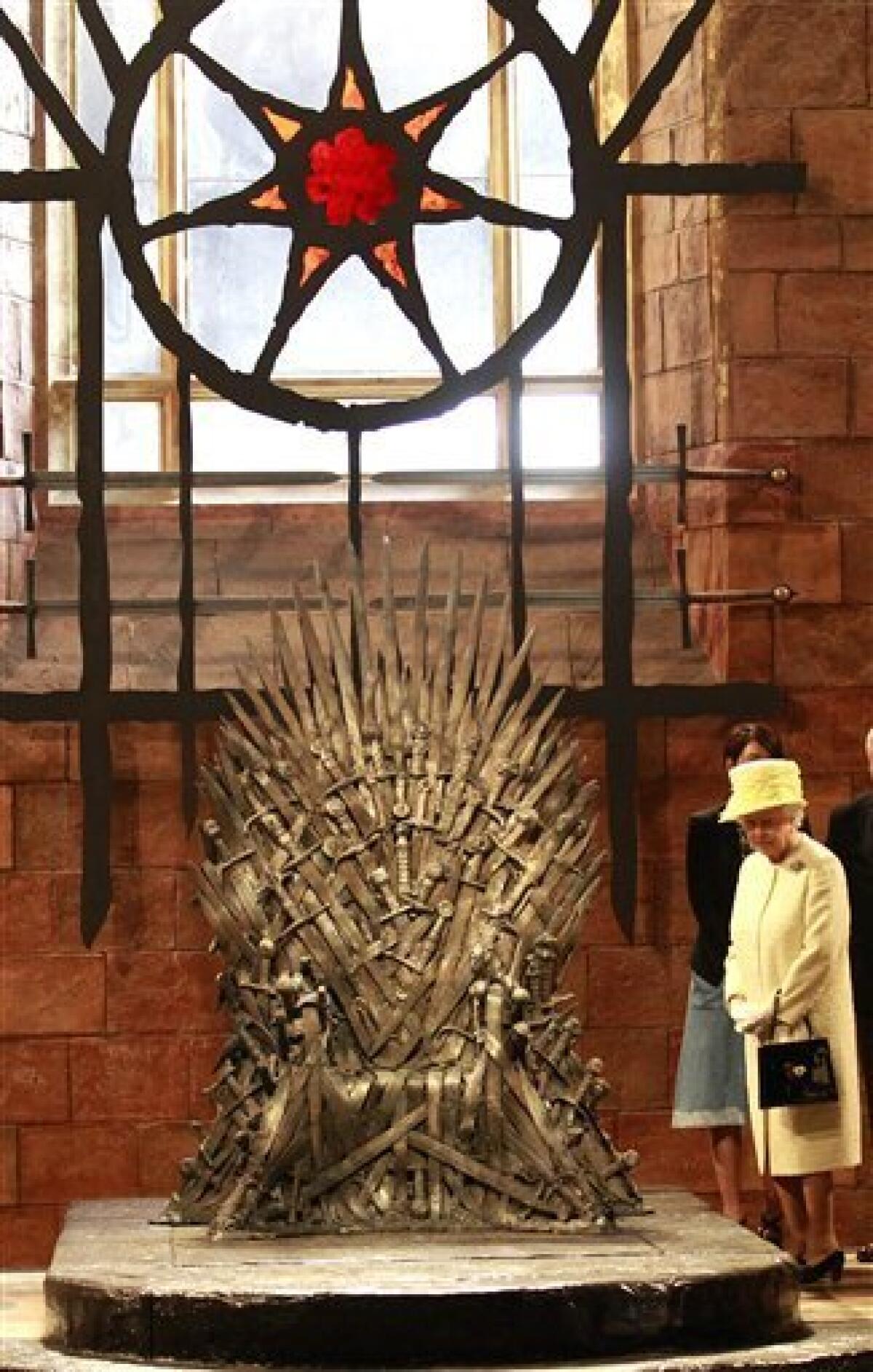
What’s more, the show has ended at a moment of political vulnerability. The open border with the Republic of Ireland has become a major sticking point in Brexit negotiations because of concerns that the reinstatement of checkpoints would fan tensions. (Northern Ireland voted to remain in the European Union.)
To outsiders, both the fragility of the peace and the intransigence of the division can seem surprising.
Executive producer Bernadette Caulfield, an American, relocated to Belfast beginning in Season 2 and lived there until the end of production last year. She said she had naively assumed that because bombs were no longer exploding regularly that “everything was fine now.”
But almost everyone involved with the show understands that hope can be a powerful agent of change. “You could see how our impact allowed people to buy cars, to buy houses. A lot of people would say, ‘This is the house that Cersei built,’ ” Caulfield says. “If a city is prosperous, maybe people are forgetting about who they didn’t like before.”
At the Ulster Museum, an institution dedicated to the culture and history of Northern Ireland, a 250-foot linen tapestry tells the story of the first seven seasons of “Game of Thrones.” It is hand-embroidered in a style inspired by the 11th century Bayeux Tapestry that contrasts amusingly with the show’s premium-cable story lines. One tableau in particular, depicting a bare-bummed Jon Snow in bed with Daenerys Targaryen, has caught Helen Sloan’s eye this morning.
“You can’t see Kit’s abs,” she says, referring to actor Kit Harington, who plays the King in the North. “I’m sure he’s not happy about that.”
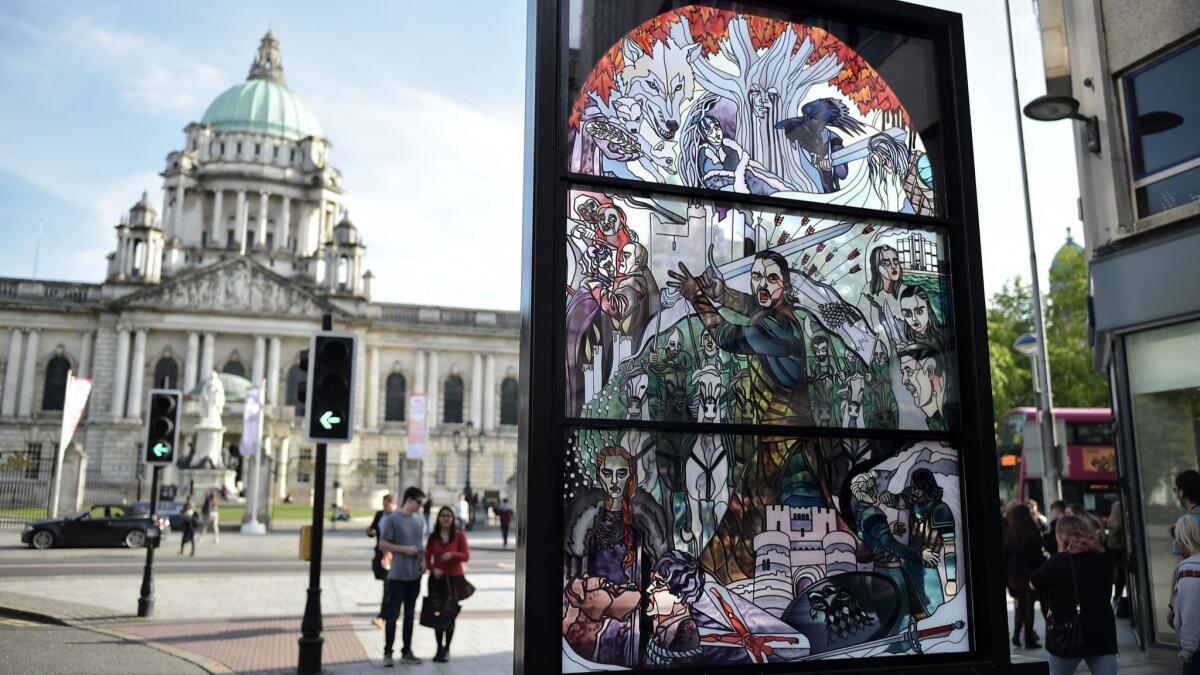
Given free rein with her camera throughout its entire run, Sloan, 37, is one of the few crew members who has interacted with virtually everyone involved in “Game of Thrones” — actors as well as producers, painters and plasterers. Her mom worked as a seamstress on the show, and her daughter appeared as Daenerys and Khal Drogo’s baby in a vision in Season 2. So every time one of her photos pops up online, it conjures a backstory. “Never mind the story line in the show, the crew have been through marriages, divorces, deaths, illness, having babies, losing babies,” she says.
The long, intense hours on set inevitably led to a lot of “Troubles chat” between people who grew up on different sides, she says. “It’s easy to work with people who don't share your views when you're working together for a common goal. All that stuff had already started to fall by the wayside, and I hope by the time my daughter is my age, all of that's going to be a distant memory, that she brings her kids to listen to granny talk about all that weird stuff that happened here 60 years ago.”
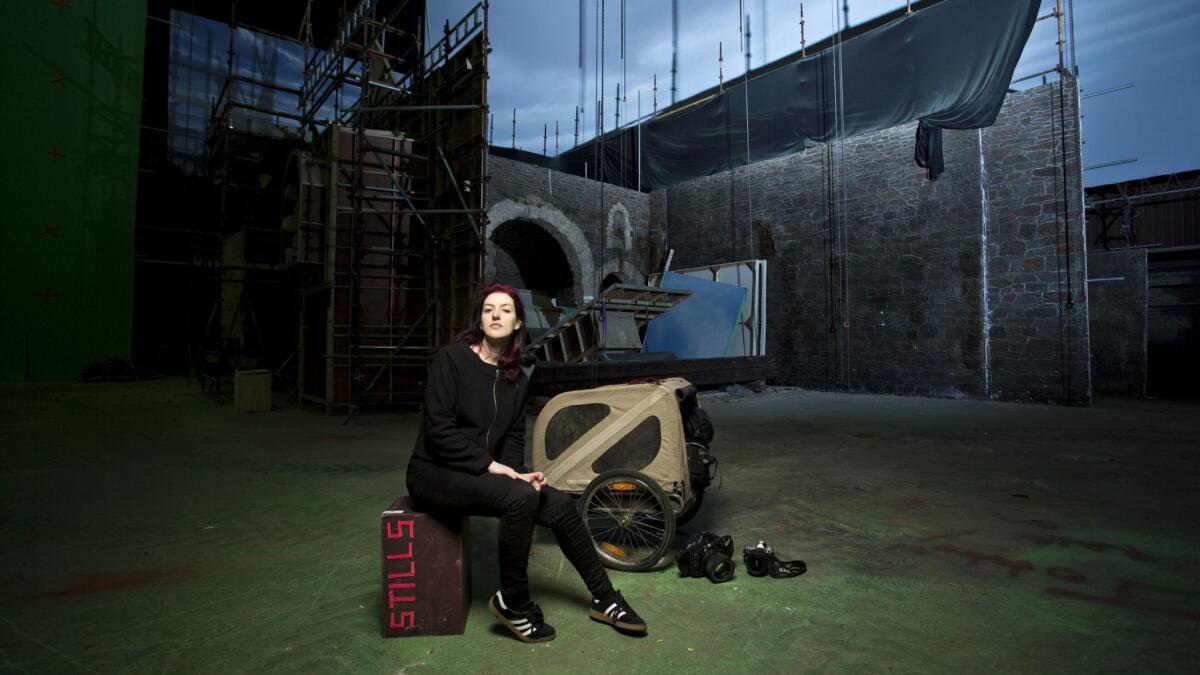
Follow me @MeredithBlake
The complete guide to home viewing
Get Screen Gab for everything about the TV shows and streaming movies everyone’s talking about.
You may occasionally receive promotional content from the Los Angeles Times.



